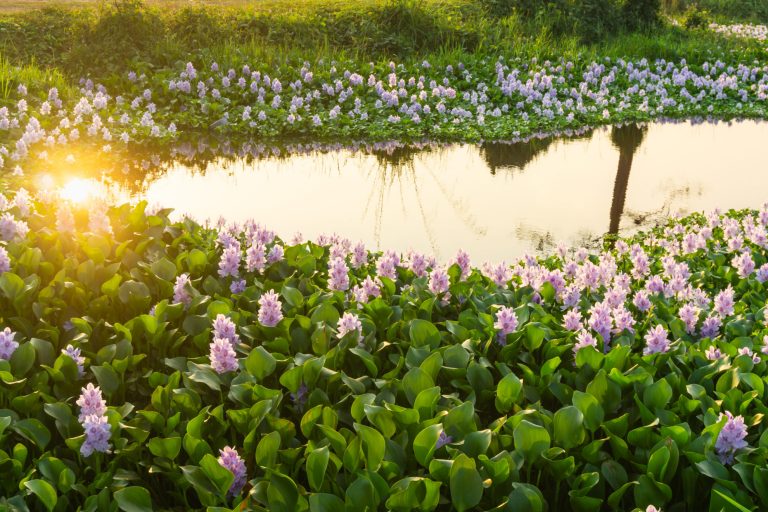Still Water Community Plants

Water hyacinth blooming in the lake
Table of Contents
Freshwater Plants & Water
As mentioned in the previous tutorial about still water plants, the method of transpiration as a whole is altered in freshwater plants, due to the abundance of water in their external environment, or in the case of some, uptake of water from a wet environment, but the loss of water via their leaves in the open-air environment.
An example of transpiration problems for such plants is as follows:
- The plant lives in a marshy environment, where roots take up water from the soaked ground, allowing plenty of water to be taken up and transported up and across the plant.
- The difference in water concentration between the plants’ leaves and the open-air environment is so great that much of the water absorbed is lost to the external environment, meaning the plant loses water rapidly
- Such a problem is solved by evolutionary adaptations that essentially address the issue of re-balancing the critical deviations between the water that is absorbed and lost in a plant.
Freshwater Plants & Nutrients
On top of the need for plants to maintain a suitable water concentration in plant cells, they also require various nutrients that are found in the nutrient-rich soil and the surrounding waters. In addition to the carbon, hydrogen, and oxygen required for photosynthesis, plants require a range of macro-elements, notably magnesium (Mg), nitrogen (N), phosphorus (P), and potassium (K). Some of these elements, notably the gases, are readily available in the atmosphere, while carbon dioxide is produced from decomposing organic matter. Other elements are readily available in the soil, with nutrients becoming available from a decomposing matter adding to the fertility of the surrounding soil. Oxygen becomes available from the photosynthetic activities of plants, which provide the link between oxygen and carbon dioxide concentrations in the area.
The availability of such elements will affect the productivity of the plants in the freshwater ecosystem and the combined productivity of the ecosystem as a whole. Evidently, the environmental factors of the freshwater ecosystem have a great bearing on how plants survive in the community. The following tutorial introduces flowing water communities, which bring new and dithering factors into the equation for possible species occupying the area.
You will also like...

Animal Water Regulation
Animals adapt to their environment in aspects of anatomy, physiology, and behavior. This tutorial will help you understa..

Plant Water Regulation
Plants need to regulate water in order to stay upright and structurally stable. Find out the different evolutionary adap..

The Water Cycle
The water cycle (also referred to as the hydrological cycle) is a system of continuous transfer of water from the air, s..

Adaptation Tutorial
Adaptation, in biology and ecology, refers to the process or trait through which organisms or the populations in a habit..

Plant Biology
Plantlife can be studied at a variety of levels, from the molecular, genetic and biochemical level through organelles, c..

The Origins of Life
This tutorial digs into the past to investigate the origins of life. The section is split into geological periods in the..
